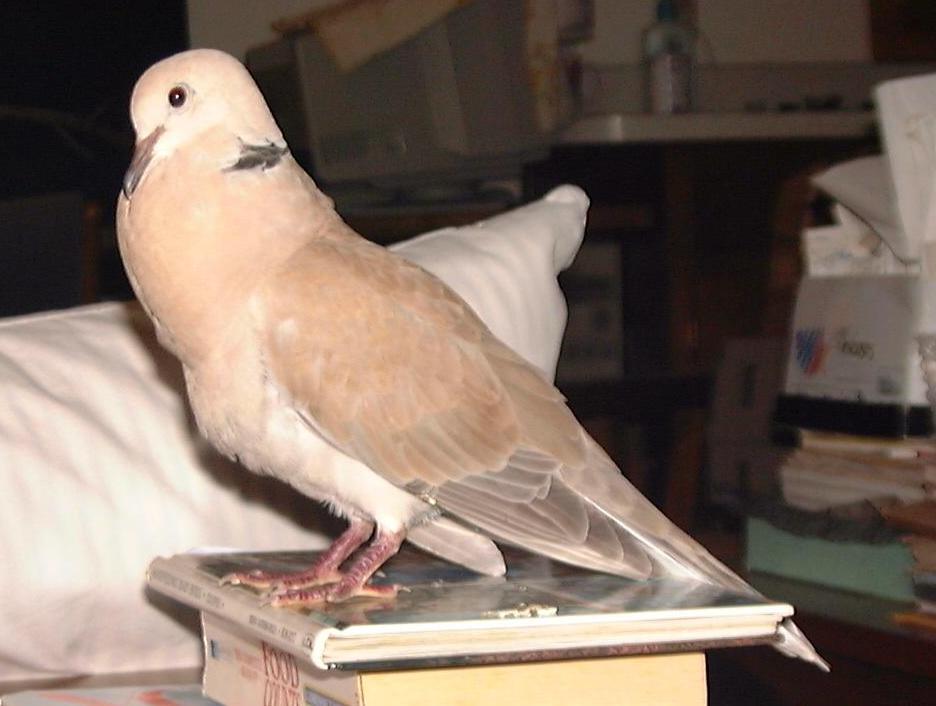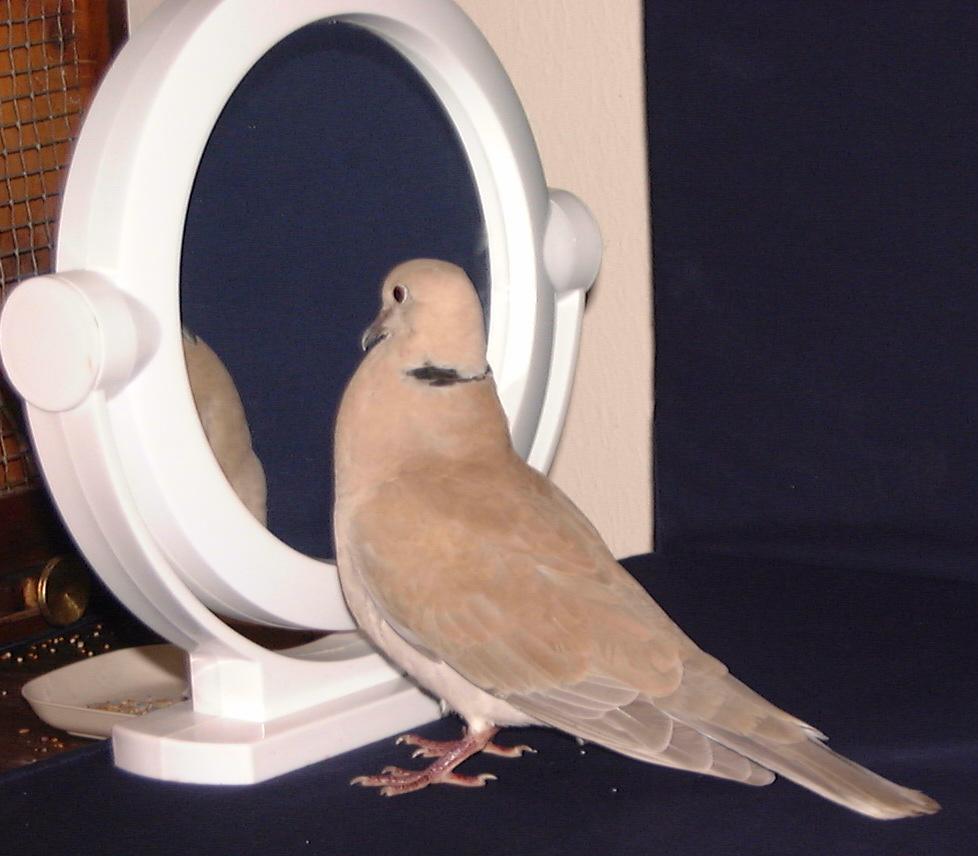Ringneck Doves
Three papers published by Dr. Wilmer J. Miller
.....Cultural Information
.....Ringneck Behavior
.....Sex Determination

SEXING DOVES II. SEXING BY BEHAVIOR
Most of us do depend on behavior to distinguish sexes in doves and pigeons. Experienced fanciers need only spend a few minutes observing behavior among a group of birds to decide which is what sex. But we get fooled sometimes. That bird which we thought was a young female was a little too young, and turned out to be a male a little later. Or..." It was so big and it's head so square, I thought sure it was a male."
If the birds are adjusted to their cage and in an appropriate part of the reproductive cycle, usually one observation period will allow an accurate differentiation of sex. But not all of us are experienced. So just what is the behavior that can allow us to infer the sex? I described the essential activities to look for in 1957 in the Journal: Animal Behaviour, Vol. 6 pages 10-6, but I won't go into as much detail here. Four or five behavior characters can be used for the ringneck dove, Streptopelia risoria. Much will also apply to other species with slight modifications.
(1) The bow-coo. Only males give bow coos under ordinary conditions, however, females long isolated from males may do so irregularly. This is the fastest coo in courting behavior, and is always directed at a particular bird with an accompanying head bow. The feet often alternate in "stamping". [This stamping is enhanced and speeded up in the Australian Crested dove, Ocyphaps lyphotes.] Perch coos and nest coos are slower and softer and the nest coo is always accompanied by wing "flipping". Perch coos and nest coos may be given by both sexes.
(2) Billing. The female may put her bill inside the males mouth after squab-like begging movements and be fed token amounts.
(3) Sex crouch. To culminate courtship in mated pairs, the female will squat down, tuck her head in close, and raise her shoulders preparatory to supporting the males feet.
(4) Sex-mount. (Treading) The male repeatedly cranes his neck above the female (which is in a sex crouch). He may sporadically "preen" between wing tips and rump, fluff rump and posterior feathers, then mount the female, both facing the same direction. The tail of the male bends and swings to one side of that of the female, and his wings flutter to maintain balance. Within seconds the male tips backward and the cloaca meet in quick copulation. The "laugh" or challenge note normally is given immediately after copulation by both sexes. (A long isolated pair of females may mount each other.)
(5) Driving. This is much less obvious in ringnecks than in domestic pigeons and generally is not suitable for inferring sex.
(6) Display flight. The male flies upward wing clapping, then glides down. Since our birds are seldom free flying, we rarely notice this character.
Certainly, of these sex behavior characters which can allow one to infer sex, the most frequent one is the bow-coo.
It's easy - - after you get enough practice!
References
American Dove Association Newsletter (ADAN) August 1974
Pigeon Science and Genetics Newsletter 1: 21 1976
American Pigeon Journal 67: 139 1978
